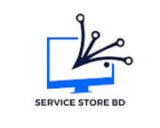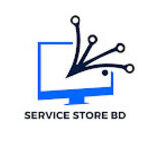How a Website Boosts Your Sales
A digital storefront never closes. Whether it’s 3 p.m. or 3 a.m., your site can handle inquiries, bookings, purchases, and customer support. The more touchpoints you eliminate between the buyer and the sale, the more revenue you generate.
An eCommerce site, for example, can guide a user from ad click to purchase within minutes—no human involvement needed. With the right copy, layout, and UX, your site can speak directly to customer pain points and drive action.
Let’s say you’re a local bakery. A customer sees a Google ad, clicks through to your site, and orders a cake for pickup—all within five minutes. That entire journey happens without you lifting a finger. Scale that across hundreds of visitors a week, and you’re looking at a major boost in revenue.
With analytics tools like Google Analytics and Hotjar, you can track exactly how users behave on your site. Where they click, where they drop off, what they read—this data helps you improve your funnel, increase your sales, and optimize conversion rates.
Your website is also your SEO foundation. Without a website, your brand has no chance of ranking on Google. But with strategic on-page SEO—fast load times, mobile optimization, keywords, schema—you attract organic traffic from buyers who are already searching for what you sell. That’s free, qualified traffic.
Let’s say you run a pet grooming business. If someone Googles “pet grooming near me” and your site appears on top with a clear call to action, you’re already winning. Search Engine Journal reports that businesses on the first page of Google capture over 90% of organic traffic. That means more bookings, more revenue, and more loyal customers.
Unlike social platforms, your website gives you full control over customer experience. No unpredictable algorithm changes, no random bans, no design limitations. You own the platform, the content, and the relationship.
Your website can also handle upsells and cross-sells automatically. Whether you’re suggesting related products, bundling services, or offering premium plans—your site can make these offers at the perfect time, leading to increased average order value.
For service providers, a well-built booking system on your site can convert casual visitors into paying clients instantly. Whether it’s coaching, consulting, or repair services, reducing the number of steps to book means fewer abandoned inquiries and more closed deals.
Here’s a quick breakdown of high-converting elements that directly impact your sales:
| Feature | Sales Impact |
|---|---|
| Fast Loading Pages | Higher conversion rates |
| Clear Call-To-Action Buttons | Directs user behavior |
| Mobile-Friendly Layout | Captures mobile traffic |
| Trust Badges & Reviews | Builds confidence |
| Exit-Intent Popups | Reduces cart abandonment |
| Live Chat Integration | Closes deals faster |
| Scarcity & Urgency Messaging | Boosts impulse buys |
Digital credibility isn’t optional—it’s essential. If your competitors have stunning, fast, and professional websites and you don’t, your brand looks outdated. That’s a silent sales killer.
Imagine a customer comparing two consulting firms. One has a modern, mobile-optimized website with video testimonials, pricing clarity, and a free resource download. The other has no website, just a Facebook page with inconsistent posts. Who do you think wins the client?
A good website also gives you opportunities for remarketing. If someone visits your pricing page but doesn’t buy, you can retarget them through Google Ads or Facebook with a custom message. This keeps your brand top of mind and increases conversion chances dramatically.
When built correctly, a website doesn’t just sell—it educates, builds authority, nurtures relationships, and drives repeat business. You can create content like blogs, FAQs, and downloadable guides that answer customer questions before they even ask. That’s sales enablement at scale.
One of the best examples of website-driven growth is Basecamp. Their simple landing page focuses on benefits, clarity, and social proof—and converts thousands of users daily without relying on external marketplaces.
By combining content strategy, conversion-focused design, technical performance, and SEO—all inside one website—you can create a revenue engine that scales.
In summary: a good website attracts the right audience, educates them, builds trust, and makes it easy to buy. Whether you’re a solopreneur or a growing enterprise, this is your most valuable digital asset—and it’s time to treat it like one.
If you’re still relying only on Instagram, Facebook, or WhatsApp for sales, you’re missing out on your biggest sales channel. Invest in a modern, optimized website and watch your revenue grow exponentially in 2025 and beyond.
✅ Internal Resources You Can Explore:


